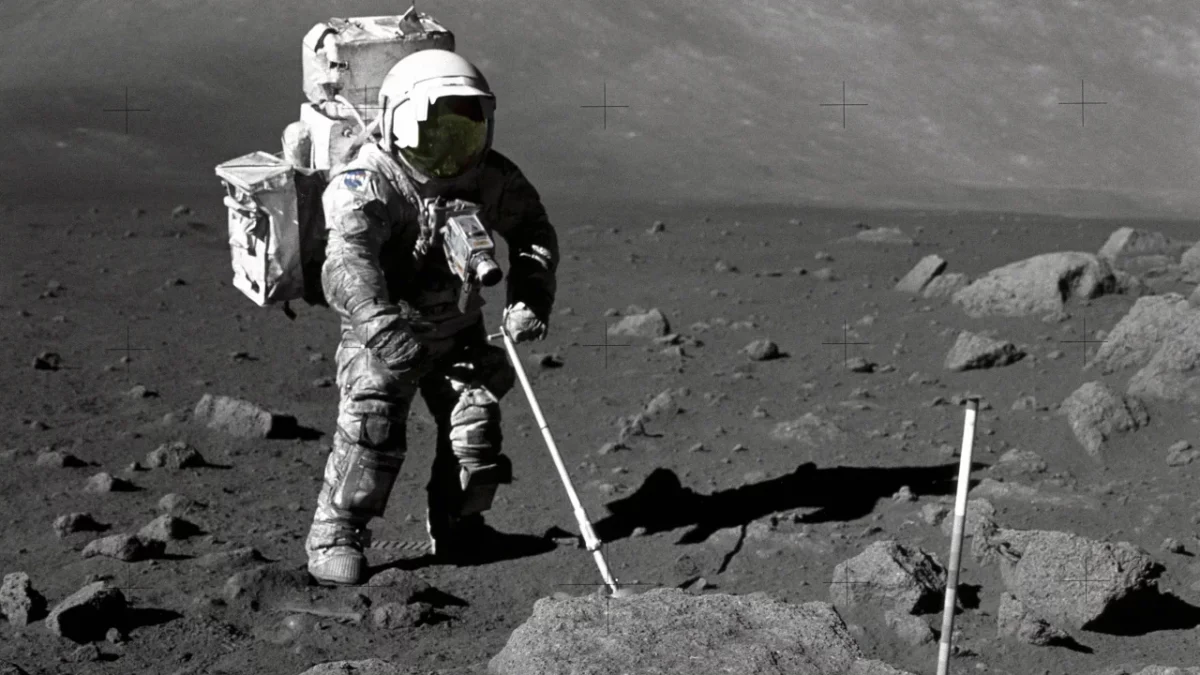Scientists have unlocked the mysteries of the moon’s age, making it about 40 million years older than previously believed.
The discovery, derived from an analysis of lunar samples collected during the historic Apollo 17 mission in 1972, has provided us with a deeper understanding of our celestial partner’s formation.
Read also: Huge Asteroid to come closer to Earth than the Moon
NASA’s Apollo 17 astronauts, Harrison Schmitt and Eugene Cernan, returned to Earth with approximately 243 pounds (110.4 kg) of soil and rock samples, including some unassuming zircon crystals. These tiny treasures, nestled within a coarse-grained igneous rock fragment, have now rewritten the history of the moon.
![A lunar zircon grain is shown under a microscope. [photo/Northwestern University] Scientists](https://news.switchtv.ke/wp-content/uploads/2023/10/231023131931-02-moon-age-northwestern-university-1095x900.webp)
“These crystals are the oldest known solids that formed after the giant impact. And because we know how old these crystals are, they serve as an anchor for the lunar chronology,” explained Philipp Heck, senior director of research at the Field Museum in Chicago.
He’s also a professor at the University of Chicago and the senior author of the study published in the journal Geochemical Perspectives Letters.
But why is the moon’s age so crucial? Well, it sheds light on the moon’s formation and, by extension, Earth’s early history.
The moon is believed to have formed after a colossal celestial collision during the tumultuous early days of our solar system. A Mars-sized object, referred to as ‘Theia,’ slammed into the young Earth, ejecting molten rock into space. This material eventually coalesced to create our moon. However, pinning down the exact timing of this momentous event has been a challenge until now.
Zircon crystals inside the lunar rock fragment collected by Schmitt offered the solution. Using a cutting-edge technique called “atom probe tomography,” scientists confirmed the age of these crystals, pinpointing a date of 4.46 billion years. This precision allowed them to conclude that the moon took shape within 110 million years after the birth of our solar system.
Bidong Zhang, an assistant researcher at the University of California, Los Angeles, who co-authored the study, expressed, “These crystals are the oldest known solids that formed after the giant impact. And because we know how old these crystals are, they serve as an anchor for the lunar chronology.”
So, how did this modern-age technology work its magic? Jennika Greer, lead study author and a research associate in Earth sciences at the University of Glasgow, explained, “In atom probe tomography, we start by sharpening a piece of the lunar sample into a very sharp tip, using a focused ion beam microscope, almost like a very fancy pencil sharpener. Then, we use UV lasers to evaporate atoms from the surface of that tip. The atoms travel through a mass spectrometer, and how fast they move tells us how heavy they are, which, in turn, tells us what they’re made of.”
By tracking the radioactive decay of uranium atoms within the zircon crystals, scientists could determine their age with remarkable precision. This innovative technique unveiled the moon’s secret, confirming its age as a staggering 4.46 billion years.
Greer was ecstatic about the discovery, saying, “It’s amazing being able to have proof that the rock you’re holding is the oldest bit of the Moon we’ve found so far. It’s an anchor point for so many questions about the Earth. When you know how old something is, you can better understand what has happened to it in its history.”
Subscribe to Switch TV
Despite these lunar samples being brought to Earth over half a century ago, it took time to develop the technology needed for such a detailed analysis. Now, with the most advanced methods at their disposal, NASA and scientists have continued to unravel the moon’s secrets.
“The Moon is an important partner in our planetary system,” noted Heck. “It stabilizes the Earth’s rotational axis, it’s the reason there are 24 hours in a day, it’s the reason we have tides. Without the Moon, life on Earth would look different. It’s a part of our natural system that we want to better understand, and our study provides a tiny puzzle piece in that whole picture.”
















